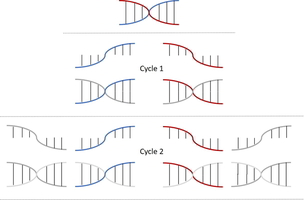PCR - Photocopying Genes
Posted in Techniques Examined • Tagged with Introductory
PCR is a common technique used to amplify specific regions of DNA. Put more simply, its a process that allows us to create copies of a piece of DNA. There are two main properties of PCR that we take advantage of - amplification (getting many copies) and isolation (of a single region).
If you understand the basic idea of photocopying, then you can understand PCR.
 I should note that the role of PCR has changed over time and I will mostly be focusing on the current use. Additionally, there are several …
I should note that the role of PCR has changed over time and I will mostly be focusing on the current use. Additionally, there are several …